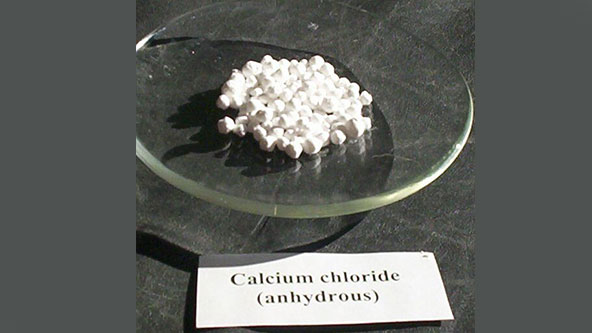What is Calcium Chloride?
Calcium chloride is an odorless, white, crystalline solid compound that is highly soluble in water. A type of salt, this calcium chloride is hygroscopic, which means it can attract and absorb water molecules from its surroundings. In fact, calcium chloride can attract several times its own weight in water, dissolving into a liquid brine if the air is humid enough and the temperature is high enough. While you might recognize Calcium chloride has a variety of applications and can lead to potential health risks if handled improperly.
Here are some important tips for handling and storing calcium chloride safely:
Common Uses of Calcium Chloride
Calcium chloride is used in a wide range of industries. Namely, this material is used to make road de-icing agents and brine. Other common applications include:
- Dust control
- Desiccation
- Salt-based dehumidifiers
- Calcifying aquarium water
- Increasing water hardness in swimming pools
- Food additive
Calcium Chloride Health Hazards
Calcium chloride poses some serious health and safety hazards. If ingested, calcium chloride can lead to burns in the mouth and throat, excessive thirst, vomiting, stomach pain, low blood pressure, and other possible severe health effects.
It can also irritate skin by causing excessive dryness or desiccating moist skin. In extreme cases of exposure or ingestion, this chemical can cause skin burns, cardiac disturbances, respiration issues, and seizures. Because of the hazards posed by calcium chloride, it is important to exercise caution when handling this material, whether in the workplace or any other setting.
Calcium Chloride Safety: Handling & First Aid
When handling calcium chloride in the workplace, always protect yourself from potential hazards by using safety glasses, and apron and gloves with a sufficient protection factor. Ensure eyewash stations and washing facilities are located in the immediate workspace wherever this chemical is prevalent. In case of exposure to calcium chloride, follow these first aid guidelines:
- Inhalation – Seek fresh air and immediate medical attention.
- Eye Contact – Remove contact lenses, if present. Immediately flush eyes with plenty of water for at least 15 minutes to prevent damage, and seek medical attention.
- Skin Contact – Flush affected area with plenty of water. Remove contaminated clothing and wash with soap. Get medical attention and cover any irritated skin with an emollient.
- Ingestion—Do NOT induce vomiting. Never give anything by mouth to an unconscious person. Seek medical attention immediately if large quantities of this material are ingested.
Calcium Chloride Storage & Disposal
Store calcium chloride in a secure area away from incompatible materials and moisture. Keep container tightly closed in a cool, dry, well-ventilated area. This chemical must be disposed of in accordance with federal, state, and local environmental control regulations.
To learn more about the potential health threats of this chemical and others in your workplace, browse our extensive library of SDS information here.
VelocityEHS Can Help!
Looking for calcium chloride hazard and safety information? Visit our VelocityEHS SDS Search page to quickly access safety data sheets (SDS) for the chemicals in your workplace. While you’re there, check out the Chemical Management capabilities of our Safety Solution, part of the VelocityEHS Accelerate® Platform. Our Chemical Management software capabilities will help you simplify the management of hazardous chemicals in your workplace including employee right-to-know access to SDSs from any mobile device, detailed workplace chemical inventory tracking, container labeling, and OSHA/EPA regulatory reporting, and much more!
Request a Demo today to see how easy GHS/HazCom compliance can be!
